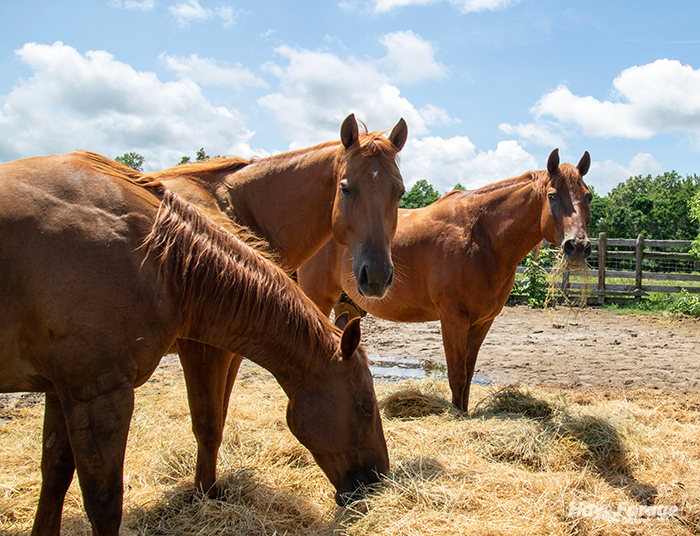
Compared to cattle, horses have different nutrient requirements and health conditions that can be met or affected by the hay they eat. Horse owners often have different expectations for hay quality and appearance compared to beef and dairy producers as well. Therefore, making and marketing hay for horses is a whole different ball game.
At the Alfalfa and Stored Forage Conference earlier this month in Bowling Green, Ky., Laurie Lawrence with the University of Kentucky defined five key principles for targeting the horse hay market. In addition to meeting specific requirements of the animals themselves, following these guidelines can also strengthen trust and relationships among horse owners.
1. Cleanliness. Lawrence said hay cleanliness is the most important factor of horse hay — even above forage quality — and is described as being free of toxic plants, foreign objects, and dust and mold. Although the latter substances may be thought to cause digestive issues, she noted dust and mold are more detrimental to horses’ respiratory function.
“(Horses) are very susceptible to irritation and inflammation in their lungs,” Lawrence explained. “They can develop a significant lower airway disease as a result of consuming moldy and dusty hay.”
2. Consistency. This refers to consistent nutrient composition of hay from one cutting to the next. Lawrence said inconsistent hay quality can lead to feeding mistakes that can impact weight gain or weight loss. A lack of consistent hay quality can also cause digestive disorders like colic.
3. Convenience. One component of hay convenience is bale size. As a horse owner herself, Lawrence shared that small square bales are easier for her to carry, stack, and feed out. She also noted many owners don’t have equipment to handle large square or round bales, nor do they have the infrastructure to store large quantities of hay.
“All of these things affect the price of hay, but a lot of horse owners are willing to pay for that,” Lawrence stated, leading into the next principle.
4. Cost-effectiveness. As a hay producer, pricing hay by weight is more effective than pricing hay by the bale. For example, a 60-pound bale should cost more than a 45-pound bale to justify the cost of forage production.
From a buyer’s perspective, Lawrence noted hay waste contributes to cost-effectiveness. “Horses are extremely selective eaters,” she stated. “Of the hay that horses are getting, if 30% of it is wasted, the cost of the hay that they are actually consuming is a lot more expensive.”
She added that less expensive hay is often lower quality, but buying this product will likely lead to more spending on complementary feeds to ensure animals receive adequate nutrition. Therefore, owners must consider their total feed costs to determine what they are willing to spend on hay.
5. Composition. Hay composition must match horse type; however, not all owners are prudent to their type of horse’s nutrient requirements. This creates an opportunity for hay producers to market their hay to specific animals.
For example, lactating mares and competitive racehorses need hay with ample digestible energy, whereas idle or recreational horses have much lower energy requirements. Lawrence said early maturity alfalfa hay is ideal for the former types of horses and lower quality hay, like timothy hay, can be sufficient for the latter types. She added that these animals could simply eat a smaller amount of high-quality hay, but horses typically spend two-thirds of their day consuming feed.
“If you restrict hay intake, there are some consequences,” Lawrence asserted, adding that shorter feeding times can encourage disruptive animal behavior. “In general, it is more desirable to pick hay that fits the horse’s needs so you can feed them a higher amount and they are busy eating all day.”

